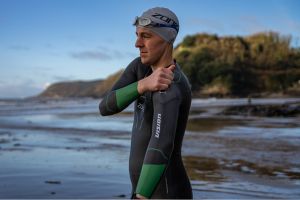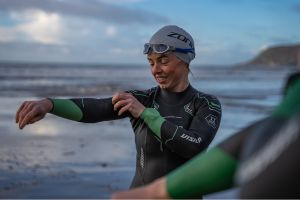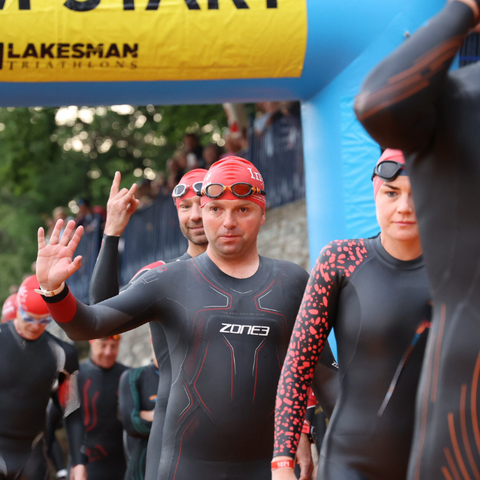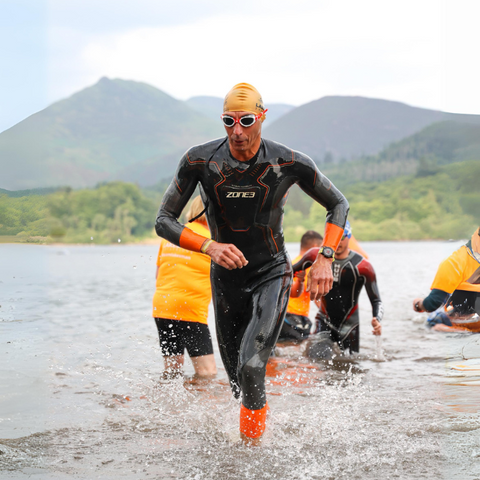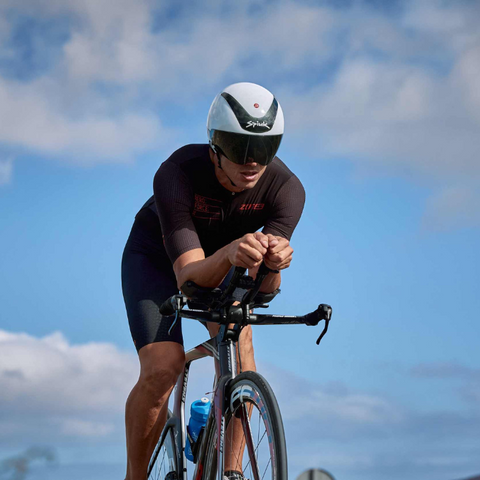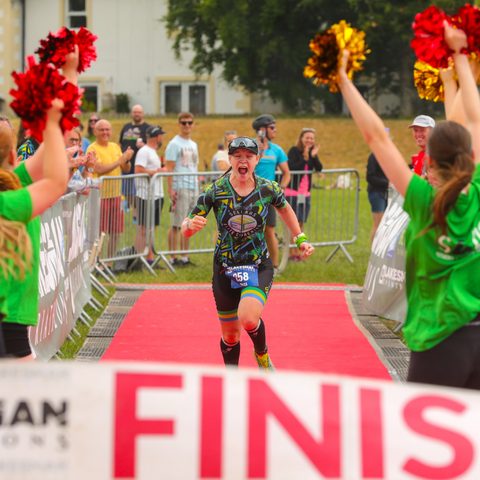It’s all about you
The first point that we need to discuss here is that everyone is an individual. Each person has different motivations for completing a 70.3, is at a different point in their fitness journey, has different amounts of time to commit to training, has different other life stresses and a different amount of money to invest in the journey.
You need to be realistic about what you can commit to, what you want to achieve, and what you can manage without injury or illness. I will preface all of what is about to come with a statement that I may return to:
“Consistency wins the day, every day – doing something is always better than doing nothing’.
What I mean by this is whether you run for 45 mins or 60 mins, ride at 95% of your threshold for 5 mins or 100% for 4 mins, is largely immaterial. Doing any of those is better than doing nothing! Lots of people procrastinate on the detail, and forget to actually do anything at all.
Preparation for a 70.3
Commitment
I believe that with a sensible level of dedication, the zero to 70.3 timeline can be around 6 months. During that time, you need to understand that you will be training in some form on at least 6 days every week. You will need to allocate 60-90 mins per day, 4 or 5 days a week, and 2-4 hours 2 days per week.
You will need to understand when you can swim at your local pools, as the serious swimmer times are often early morning and late evening.
You will need to run when it’s dark, wet, cold and windy.
You will need to work out how you will do you bike training (outdoors, indoors on your bike with a turbo or at a gym on a Wattbike).
You will need your family and friends to understand and support the journey that you are going on.
You will need to get acquainted with the early morning – I find those that have most success have routine and get training done before life takes over!
Swim training for a 70.3
If you are fortunate enough to be a childhood swimmer, this is the easy bit. If not, I strongly advise getting someone to video your stroke (ideally underwater) and compare that to what good looks like on YouTube. Or invest in some lessons. Swimming is different to biking and running - more volume with a bad stroke does not help, technique is everything, so work on that all of the time. 3 swim sessions per week is a nice sweet spot for a 70.3 unless you want to be first out of the water. Swim fast sometimes, swim slowly a lot, but always focus on technique. On race day you have to cover 1900m, so as you get closer to race day, you should be covering that most times you swim, and making sure you gain confidence that cut-offs are not an issue for you.
As the weather and water warms up, you will need to go and swim in open water once per week, covering the distance in a safe, group or organised environment. Practice wearing your wetsuit with your tri suit underneath so you are definitely comfortable on race day. 
If you are fortunate enough to be a childhood swimmer, this is the easy bit. If not, I strongly advise getting someone to video your stroke (ideally underwater) and compare that to what good looks like on YouTube. Or invest in some lessons. Swimming is different to biking and running - more volume with a bad stroke does not help, technique is everything, so work on that all of the time. 3 swim sessions per week is a nice sweet spot for a 70.3 unless you want to be first out of the water. Swim fast sometimes, swim slowly a lot, but always focus on technique. On race day you have to cover 1900m, so as you get closer to race day, you should be covering that most times you swim, and making sure you gain confidence that cut-offs are not an issue for you.
As the weather and water warms up, you will need to go and swim in open water once per week, covering the distance in a safe, group or organised environment. Practice wearing your wetsuit with your tri suit underneath so you are definitely comfortable on race day.
Cycling training for a 70.3
Typically, half of your race time will be on the bike, so this needs an appropriate amount of consideration. Comfort is always important. If I was going to invest cash anywhere, a bike fit would be my suggestion. Your fancy wheels, aero helmets, ceram speed chains all have a place in the end, but being comfortable on your bike for 3-5 hours is the number one priority.
In terms of training, focus a lot of time riding your bike over longish distances outside – at least once per week, and twice closer to the race if you can, you need endurance and bike handling skills in all weathers, so don’t be afraid to dress appropriately and get outside. These should be steady, continuous rides, not filled with lung busting efforts. You can establish definitive HR or Power zones if you have the interest, but if you can talk in full sentences, you’re at about the right intensity. Topping that up with 1 or 2 short (1 hour max) indoor interval sessions to make you sweat a bit, is a great combination.
Run training for a 70.3
In triathlon, running is different to standalone running, mostly because you are doing it tired. By this time, you will have been on the go for 3-5 hours, and awake for a good while longer!! Unless you are at the sharp end, your 70.3 run time will have little in common with your latest HM time, so reflect this in your training. Fast running (track sessions, etc) is great for top end speed, but is also the easiest way to get injured (refer to the consistency quote), so use them sparingly, if at all. The most important thing is that you can stay on your feet for 21.1km, so practice that more anything. Consistently running easily (talking in whole sentences again) for 30-60 mins, 3 or 4 times per week and building one of those to 21.1km as you get close to race day is a sensible approach. Take your time – no more than a 10% increase in volume each week, and listen to your body. 90% of injuries in triathlon training come from running….be careful! 
Strength & Conditioning for triathletes
Most people’s least favourite past-time is strength and conditioning, but it’s essential to the consistency game in triathlon. There are lots of sessions available in online, but whether it’s lifting weights (for lean muscle, not muscle mass), Pilates classes or yoga classes – doing something twice per week will make a huge difference to your body’s resilience. S&C will help prevent injuries and make sure you get to the start line.
So you can see from that lot, that time soon adds up:
3 swims, 3 bikes, 3 runs, 2 S&C sessions - 11 sessions in 6 or 7 days!!
Lakesman Race Day Specific Preparation
As you get to within 8 weeks of the event, you need to tailor your remaining training to the race. Here are some thoughts that run through my mind as I am planning for myself and my athletes at the Lakesman. 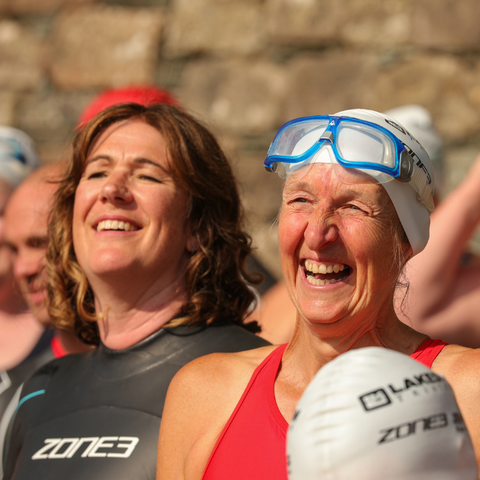
Lakesman Swim. There is a choice of mass start or a gentle trickle in from the side where you walk over a timing mat and your day starts. What suits you best? If you go for a mass start, where do you want to start – front, middle, back, sides? A lot of this comes down to your competence and confidence as a swimmer, and your desire for a “time” from the race.
Once you’ve started, how will you swim – have you practiced sighting buoys, have you practiced swimming on people’s feet / in a crowd / can you breathe to both sides?
I would strongly advise entering the Friday night Lakeswim event that is run by the Lakesman. The 1900m swim is on the exact race day course, you will be able to practice sighting, get used to any surface ripple and admire the amazing scenery which you may forget to do on race day!
Lakesman Bike. The bike leg comes in 2 parts for me. Firstly, do you know how to ride the course – what effort level (Power / HR / RPE) will you use. The Lakesman course has a bit of everything – lots of fast, flattish sections on great tarmac where you want to be gaining some speed. It also has a lumpy middle – have you practiced riding on hills, and descending them – there are a couple of fast descents too! There is nothing better than paying a visit to the lakes and riding the course. The second thing is can you get your bike around the course – is it well maintained and clean, are you carrying any spares you might need, can you change a flat tyre, free a jammed chain. Sometimes, the unexpected happens and the best mechanic can’t get themselves sorted, but basic skills are a must – don’t DNF because you can’t sort a puncture or haven’t charged your Di2 etc.
Lakesman Run. By this point in your training you should be OK covering 21.1km….but do you know what it feels like to run it after a bike. You must do a number of bike / run sessions – short runs to start with, progressing to as much as 15km if you are in good shape. Nothing can prepare you for the first 1-2kms running off a long bike ride! The Lakesman run course is fantastic, a real mix of solitude and spectator atmosphere, so once out there you will have plenty of motivation. There are a few out and backs, twists and turns, make sure you run in a similar environment, and can handle 90 and 180 degree turns when you are tired.
Lakesman Transitions. These are not picnic sites, do not hang around in them!! Practice taking a wet, wetsuit off, and changing for the bike. T1 at the Lakesman features a reasonably long run up a reasonably sharp incline – you will be surprised how hard that feels straight out of the water. Practice T2 too, run through in your mind how it will work. My advice, keep moving all of the time, its amazing how much time you can waste in transitions if you are not organised!
On-course race Nutrition. This can be as simple or complicated as you want to make it. In essence, for most people, you want to aim for 1 gram of carbs per KG of bodyweight per hour from the start to the finish, and you want to drink to thirst depending on the weather and effort levels. How you get that and how you carry it needs refining in your training. Some people prefer solids on the bike, some people go with liquids and gels all day. The one thing I advise is practice with it in training – make sure your stomach can tolerate it, and you know how you are going to carry / access it. This phase of race preparation is not about losing weight by training hard and not fuelling it – this is the time to make all big sessions as specific to race day as you can. The Lakesman provide Power Bar on course nutrition, which seems to suit most people, but if you are going to use it buy some to try, and practice taking a full bottle from someone at a feed station without dropping it, falling off, or causing someone else to crash!!
Enter the Lakesman 70.3 triathlon HERE.
Written by Paul Sellars – 7 time finisher of the Lakesman triathlon. Paul has been partaking in triathlon for over 12 years, which he started for health reasons.
